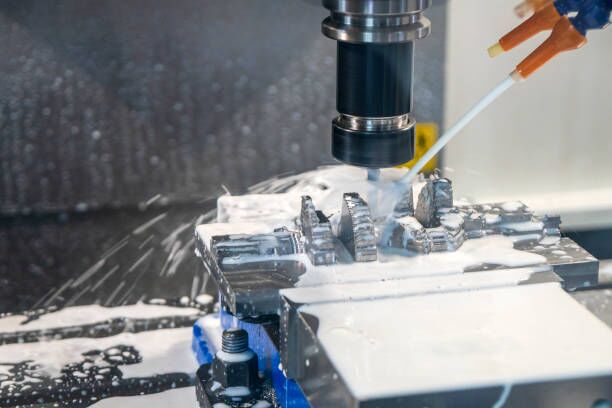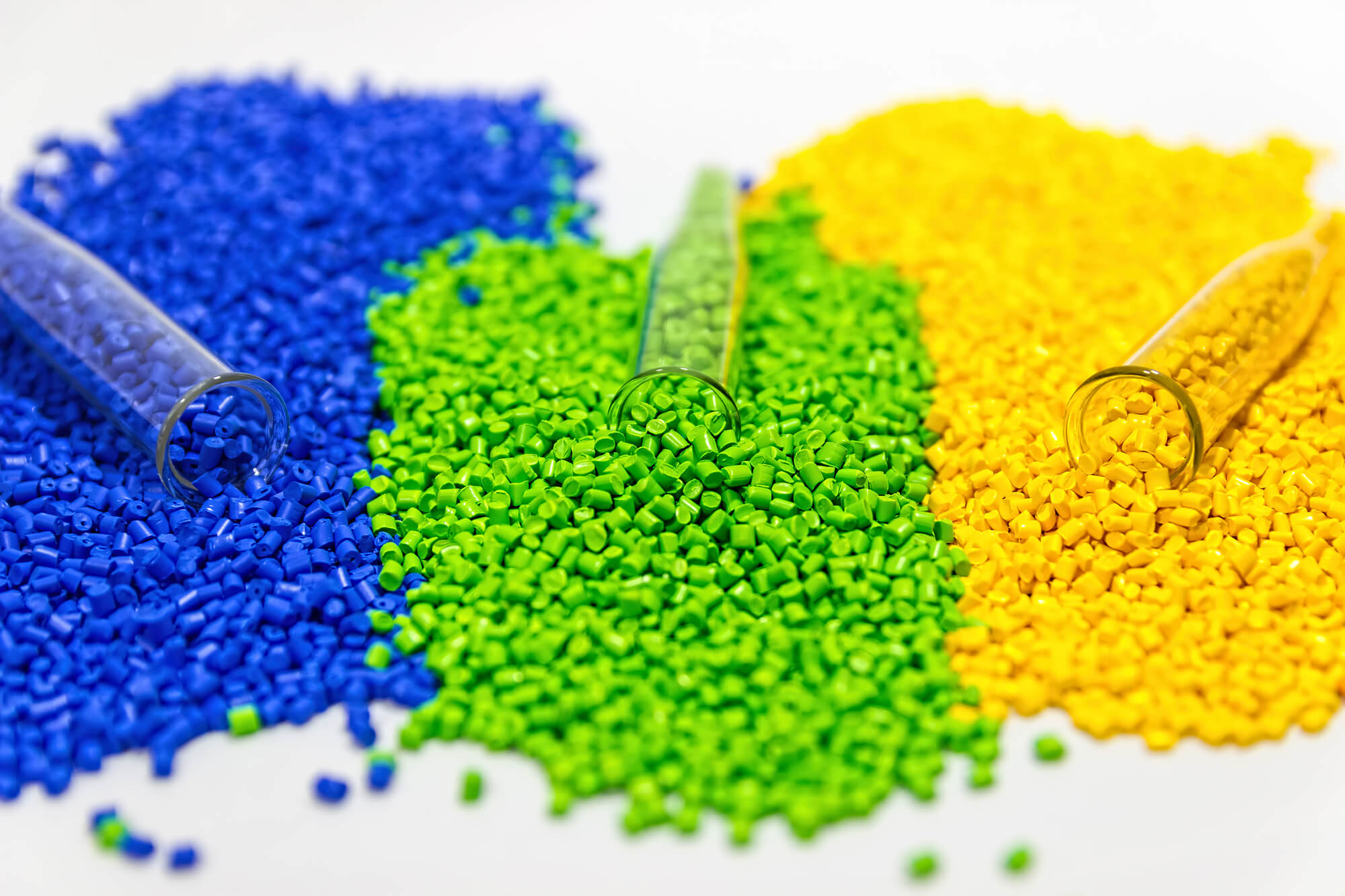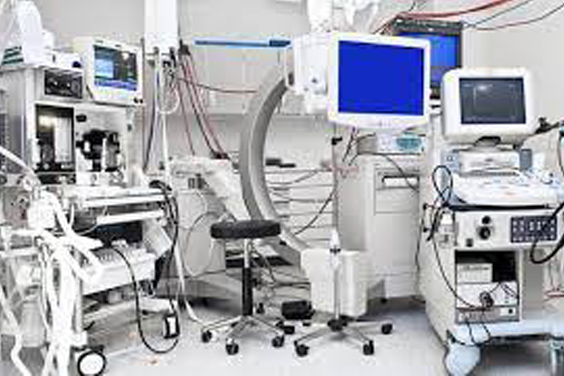Plastics provide strength and versatility in a number of operations. However, each operation demands a different manufacturing process to mold the parts as per the specifications.
Injection molding and thermoforming are two different processes several industries employ to craft a plastic part. Each operation is unique and has its own set of advantages and disadvantages. However, you must keep in mind that you cannot use Injection molding where Thermoforming is required and vice versa.
Thermoforming generally finds application in short production runs and large-scale designs. On the other hand, injection molding is used for the production of small and intricate plastic parts. Our article takes a deep dive into both concepts to help our readers make an informed choice for their manufacturing process.

What Is Thermoforming?
Thermoforming is a process of forming a heated sheet of plastic on the surface of either male or female mold. This manufacturing process is used to build and create 3D-formed plastic parts. It is a single sided plastic manufacturing process.
The objective is accomplished with the application of positive pressure or vacuum. After the required mold is formed through the procedure, the extra and unrequired material from the mold is trimmed down to achieve the exact design specifications. Some secondary operations, such as silk screening, additional assembly, painting, etc., may also be carried out to complete the production of the desired part.
Vacuum forming
Vacuum forming is the cheapest and the oldest type of plastic molding. The process is usually widely used for smaller objects and heavy industrial machinery that are used in everyday life. The process is employed at a large scale because of the benefits offered, such as cost-efficiency, the speed of imitation, efficiency in the process, etc. While carrying out this process, a layer of plastic is placed on the mold, and then a force of suction is applied so that the piece gets molded in the desired form.
This process helps produce a part that is strong, seamless, durable, lightweight, etc. The parts formed using this process are used in thousands of applications to achieve the desired objectives.
Pressure Forming
Pressure forming is another thermoforming process used to mold products to produce a final product. This process helps develop parts with crisp features and detailed textures. The process and the outcome are more or less similar to vacuum forming vs injection moulding. Though, the tooling and production of this process are faster and simpler than injection molding.
Moreover, the cost of producing plastic products through pressure forming is just a fraction of what is otherwise spent on other processes. You can choose the ideal process based on all your specific needs. The parts formed by this process have sharper and crisper details, much better than the rival molding procedures.
Twin Sheet Forming
It is a plastic manufacturing method in which two sheets are formed simultaneously in their respective mold and are then pressed together. The procedure employed in this is either pressure forming or vacuum forming.
While the sheets are being pressed together, a small pin is made to pass through either one of the sheets and cool air is blown through it. This causes the formation of pressure. The heat along with the pressure causes the two sheets to fuse together and become one. The excess parts are then trimmed off. This leads to the production of a rigid and strong part.
The Advantage of thermoforming
Several benefits are obtained by picking the right thermoforming process for the plastic products you want to manufacture. We list some of the many advantages of this process.
- High quality of the products manufactured.
- Cost Effective
- Manufacturing large parts is easy, so the scope in design is great.
- Flexible tooling design ability provides competitive design.
The Disadvantage of Thermoforming
Some disadvantages are associated with the process as well. We list them below for better understanding.
- The thickness of the part manufactured can be uneven at several spots. This further results in weak points in the manufactured part.
- The method requires more plastic than the other methods of plastic formation.
- This forming process is restricted to a thin-walled design.
What is thermoforming used for?
Thermoforming has several applications owing to the benefits and features it offers. Thermoforming is not only used for products but also several processes. We list some of its applications below:
- Plastic sign boards and varied signs.
- Open type containers and plastic panels.
- Contoured skylights.
- Food packaging containers.
- Electric cabinets.
- The different parts of the automotive, almost the interiors only.
- Multiple home appliances like bathtubs, sink units, and shower panels.
What is Injection Molding ?
Injection molding is a manufacturing technique that enables large-scale production of items. It works by injecting molten materials into a mold. It’s usually used to make thousands of identical things as part of a large production process. We hope now you know the difference between injection moulding vs vacuum forming.
The Advantage of Injection molding
Injection molding is one of the most versatile methods of manufacturing plastic parts, and it offers several benefits. We list some of them below;
- Rapid Production With High-Efficiency:
The rapidness of the process, along with the high output rate, makes the process cost-effective and highly efficient. It produces affordable products for the consumers and enhances efficiency within the factory.
- Enhanced Strength:
Strength is a critical aspect when a plastic part is designed and molded. Injection molding offers durability and strength to the part manufactured. This process enables the designers to produce either rigid or flexible parts. Reach out to the best medical injection molding company.
- Reduced Waste:
Excessive plastic is produced during the molding process, so you should look for a company that recycles unused plastics when looking for a molding partner. The injection molding process ensures sustainability and produces less plastic waste so that the environment stays green and healthy.
The Disadvantage of Injection molding
- One of the significant disadvantages of injection molding is that the initial changes incurred can be high for setting up the machinery and buying tooling and other required equipment.
- It is critical to note that there can be some design instructions for molding plastic using the injection molding method. For this reason, you should choose expert partners who will help you overcome several such issues.
- If low-volume parts are produced through injection molding, the process can be less cost-effective.
The application of Injection molding
Injection molding has numerous industrial applications, of which we discuss a few below;
- Automotive Parts: Several automotive industry leaders are opting for injection molding processes to manufacture, plan, and develop the parts they require.
- Household Products: Right from the Tupperware products used to the different kinds of building materials used in construction, the injection molding process is used to manufacture a vast range of products used in everyday lives.
- Pharmaceuticals and Medical: The medical industry requires shatter-proof products, perfect in shape and nonporous, and injection molding helps manufacturers such products with greater ease. Some of the products manufactured using this method range from pill bottles to x-ray components.
Thermoforming vs. Injection molding: What are their differences?
Injection molding and thermoforming are two different plastic mold manufacturing methods where thermoforming is suitable for large-scale designs and injection molding is ideal for small, detailed parts. Here are their primary differences:
- Process capabilities
Injection molding can produce extremely detailed parts, with ribs, metal inserts, bosses, multiple molding materials, screw threads, side cores, and holes. As the plastic is injected into the mold, the finished object can be almost any shape. The plastic sheet is stretched over or into a mold in vacuum forming, therefore the shaping can only be done in a single direction, which restricts the shape of the object.
- Precision & tolerances
Injection molding allows for extremely tiny tolerances, which results in identical goods every time. Vacuum forming can reach adequate tolerances, but it is less controlled compared to injection molding since the material is expanded over or into a device.
- Part Geometry & Size
Thermoforming molds are one-sided and produce profiles instead of three-dimensional objects. The most common applications for thermoformed parts are enclosures, packaging, and housings. Since side actions and pick-outs enable injection molding machines to generate small, delicate pieces, injection molding provides end-use parts. When it comes to part size, injection molding is better for components smaller than 4′ x 4′, while thermoforming is better for parts larger than that.
- Materials used
In medical plastic injection molding, the range of materials is huge. Such standard materials include antistatic plastic, chemical-resistant plastics, infrared bio compostable, and thermoplastic rubber. Thermoforming has a restricted choice of materials. However, sheets are accessible in HDPE, Conductive HDPE, ABS, Fire Retardant ABS, HIPS, Conductive HIPS, Clear HIPS, Ultra Violet Stable HIPS, PETG, PP, and PVC.
- Manufacturing Tooling
Thermoforming and injection molding aren’t especially quick as they have a 6 to 8 week lead time for tooling. In case the production needs them quickly, 3D printing your tooling is a possibility. The plastic molds can be prepared in about 48 hours. On the other hand, they can be quite costly and withstand only 100 injection molding cycles or 2,000 thermoforming cycles before deforming.
- Texture and color option
The thermoforming procedure yields a finished product that can be used right away. When it comes to shaping, thermoforming offers a variety of color, pattern, texture, and finish choices. However, to make injection-molded pieces look decent and ready to use, they must be painted or coated.
- Finishing & Waste
In injection molding, during each molding cycle, cold runners in the mold tool will harden. They must be taken from each molding and reground before being reused. The plastic in the runners of hot runner mold tools remains hot and is reused in the next molding, resulting in no waste throughout manufacturing. In thermoforming, the real result must always be cut out of the plastic sheet. It might be a wasteful procedure based on the sheet and part size.
- Thermoforming vs injection molding cost (Tooling & Production Cost)
For the tooling and production costs, single-sided thermoforming tooling is less expensive than injection molding, which requires a double-sided mold. However, the price of individual components constructed by injection molding is normally less costly. A thermoforming mold can cost between $2,000 and $10,000 at the very least. Tooling for injection molding can be as inexpensive as $1,200.
- Product Development Cycle
The normal tooling period for thermoforming is between 0 to 8 weeks with the start production following in about 2 weeks. Whereas, tooling for injection molding takes between 12 to 16 weeks with production taking up to four weeks longer. Thermoforming can be the ideal production technology if speed-to-market is a priority.
- Production capabilities
Injection molding is the process of injecting molten fluid polymers into a mold under high pressure and at a high temperature. The recently created plastic bits are removed from the mold once it has cooled. Thermoforming is the process of heating thermoforming plastic sheets and setting them to the surface of a mold. Plastic injection molding is typically utilized for massive, high-volume manufacturing runs, whereas thermoforming is utilized for smaller runs.
- Design complexity
Injection molding is perfect for producing smaller, highly complicated, and sophisticated components because it can support difficult geometries and rigid tolerances, often as low as +/-.005 based on the material and part thickness. Thermoforming is suitable for simple designs, basic geometries, and regular tolerances.
- Lead Times
Generally, the lead time is short for thermoforming compared to injection molding because of the tooling design and creation. The lead times for thermoforming are around 14 weeks with 8 weeks for tooling and 6 weeks for production. The lead times for injection molding are around 24 weeks with 16 weeks for tooling and 8 weeks for production.
- Part Thickness
It is critical to realize that the vacuum pressure used in thermoforming grabs the plastic taut over the mold, which results in a consistent thickness. If the integrity of your item depends on a variety of thick and thin parts, injection molding will be a better option since the method and mold will allow for different thicknesses inside the part.
Vacuum forming vs. injection molding
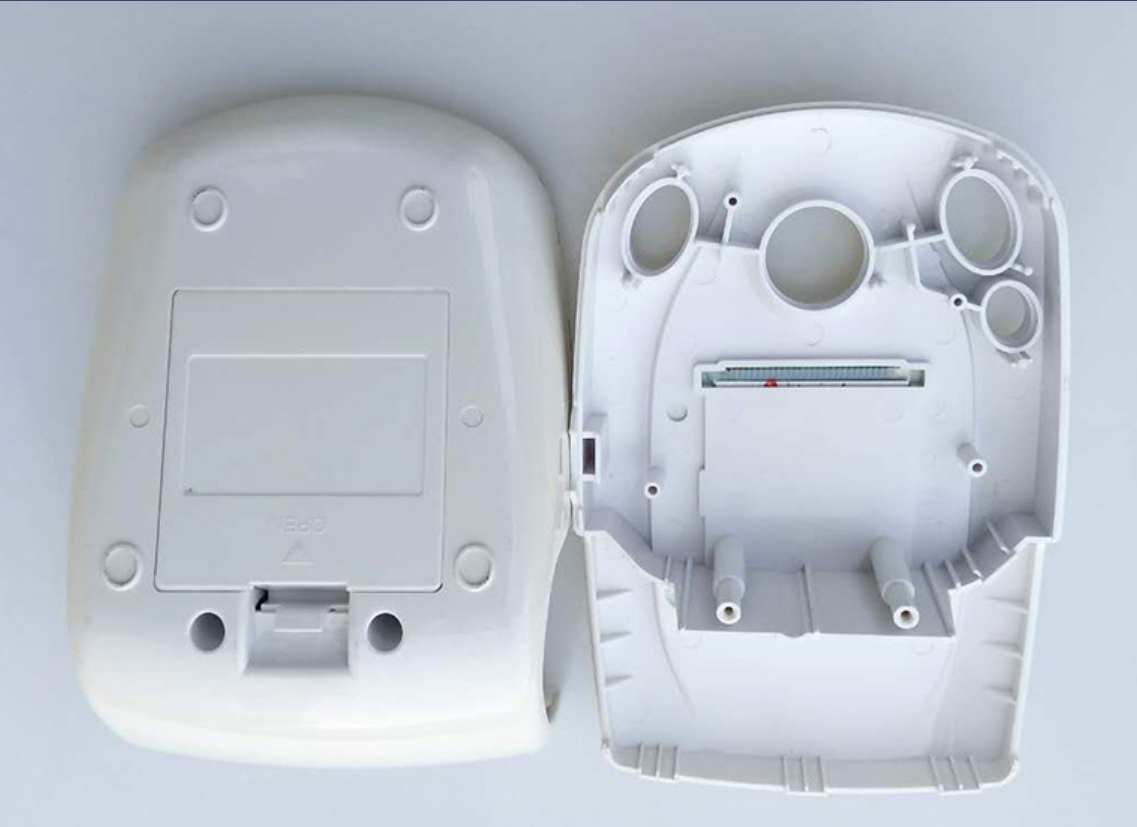
One of the most cost-effective and ideal technologies for thermoforming products is vacuum forming. Injection molding is another method of producing plastic parts.
Advantages:
Advantages Of Vacuum Forming:
- Quick prototyping and production times
- Capacity to develop large components
- Affordable cost on tiny to medium batches of components
- Suitable for repetition tasks since the molds and castings formulated can last for about years
- Less start up and tooling costs and less complex tooling than injection molding
- Several texture options
Advantages Of Injection Molding:
- Timely automation to protect manufacturing expenses
- Productive usage of material and
- There will be little to no post-production garbage
- Detailed and productive processing for huge volumes of small components
- Very accurate and engineered tooling with multi-cavity mold choices
Shortcomings:
Shortcomings Of Vacuum Forming:
- It can be tough to create more complicated designs.
- In large batches, the cost of production begins to rise (3000 parts or more)
- The procedure only affects one surface.
Shortcomings Of Injection Molding:
- Expensive start up and tooling expenses
- Lengthy lead times are necessary as mold must be custom-made
- It is extremely dependent on the mold’s proper design and production
Materials used
Materials used in Vacuum Forming:
- Limited span of materials used
- Sheets are instantly accessible in PP, PVC, HDPE, Conductive HDPE, HIPS, Conductive HIPS, Clear HIPS, Ultra Violet Stable HIPS, PETG, ABS, and Fire Retardant ABS.
- A variety of colors and special impact sheets are also accessible.
Materials Used In Injection Molding:
- The range of materials for injection molding is massive.
- The standard materials are available along with elements such as antistatic plastic, chemical resistant plastics, thermoplastic rubber, and infrared bio compostable.
- The color compounding or masterbatch coloring will provide a vast range of color options.
Process
Process Of Vacuum Forming:
In order to vacuum form a plastic item, the process includes:
- In an oven, a sheet of thermoplastic material is heated.
- A mold is used to hold the heated sheet.
- The vacuum removes air from the mold, which causes the sheet to be yanked against the mold for shaping.
- The produced plastic item is removed from the mold and trimmed when it has cooled and stiffened.
Process Of Injection Molding:
In order to injection mold a plastic item, the process includes:
- Between a mold cavity and a core, hot molten plastic is inserted under extreme pressure.
- The mold cavity opens and the item is ejected after the plastic cools and hardens.
Cost
Cost Of Vacuum Forming:
- The initial cost of vacuum forming is typically lower than that of injection molding because of the higher cost of thermoforming tooling compared to injection molding technology.
- As the pressure utilized in vacuum forming is not as high as that used in injection molding, so tooling can be manufactured of aluminum, which is a less expensive material.
- Making a single-sided tool is significantly easier and less costly than creating molds for injection molding.
Cost Of Injection Molding:
- Injection molding needs a significantly heavy and double-sided mold that can resist up to 530 tonnes of pressure.
- Due to that, the molds have to be made of more costly materials such as steel, beryllium-copper alloy, or heavy-duty aluminum.
- But once the injection molding tooling is created, it can be reused, which makes it more cost-efficient and affordable.
Applications
Thermoformed Products Applications:
The versatility, affordability, and adaptability of thermoforming products make them excellent for a wide range of applications, including:
- Aerospace
- Automotive
- Construction
- Public transportation
- Medical
- Office equipment, and others
Injection Molded Products Applications:
- Food and beverage packaging
- Construction
- Aerospace
- Automotive
- Medical and pharmaceutical
- Retail display equipment
How To Choose Thermoforming And Injection Molding For Your Need?
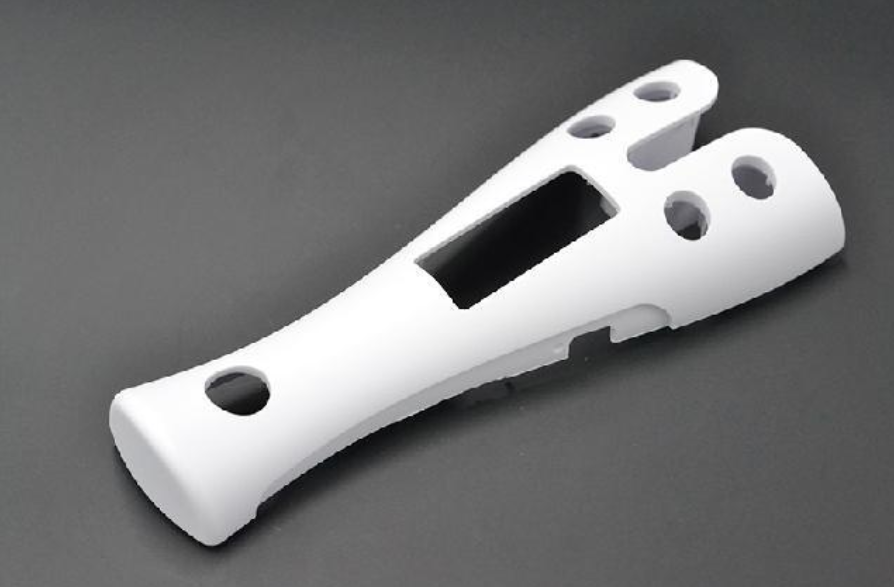
In order to specify which process is ideal for your plastic molding job between thermoforming and injection molding, it is crucial to consider the characteristics and necessities of your project. Such factors include:
- The total production quantity
- Any specific design requirements
- Total budget
- When do you need the final products
Choose Thermoforming In The Following Conditions:
- When you need basic and simple designs
- If large plastic parts are needed or when consolidating numerous components into one piece
- Small orders below 3,000 components or a single-time run
- The end product does not need differing thicknesses, harsh angles, or intersections
Choose Injection Molding In The Following Conditions:
- When you need complex and sophisticated designs
- When small plastics parts are necessary
- If large orders or periodic parts are required
- The end product needs varying thickness, sharp corners, and crisp angles
Contact SeaskyMedical
SeaskyMedical is a high-end injection molding company with over 10+ years of experience and delivers professional medical product development and injection molding services at affordable prices. Our experts will closely deal with every process including product development, material selection, free mold design, mold making, CNC plastic machining, and product manufacturing.
With professional and tight production environment management, we match the production requirements. With ISO 13485:2016 certification, we can assure the excellent quality of our products. You can notify us about your product manufacturing issues, and our team of experts will come up with a comprehensive solution that includes everything from design to production.
Foreign imported precision processing appliances and high-precision injection molding devices are used at SeaskyMedical. For every 3 to 5 years, we modernize our equipment to ensure product quality and timely delivery. All the manufactured products will be checked for quality and go through an inspection process to ensure that we provide only the best quality mold products to our clients.
Our team will conduct a complete DFM study for your product in the development stage, reducing project risks. SeaskyMedical is a one-stop solution to obtain different types of plastic components generated for various applications. So, if you have any questions, make sure to contact us for immediate assistance.

